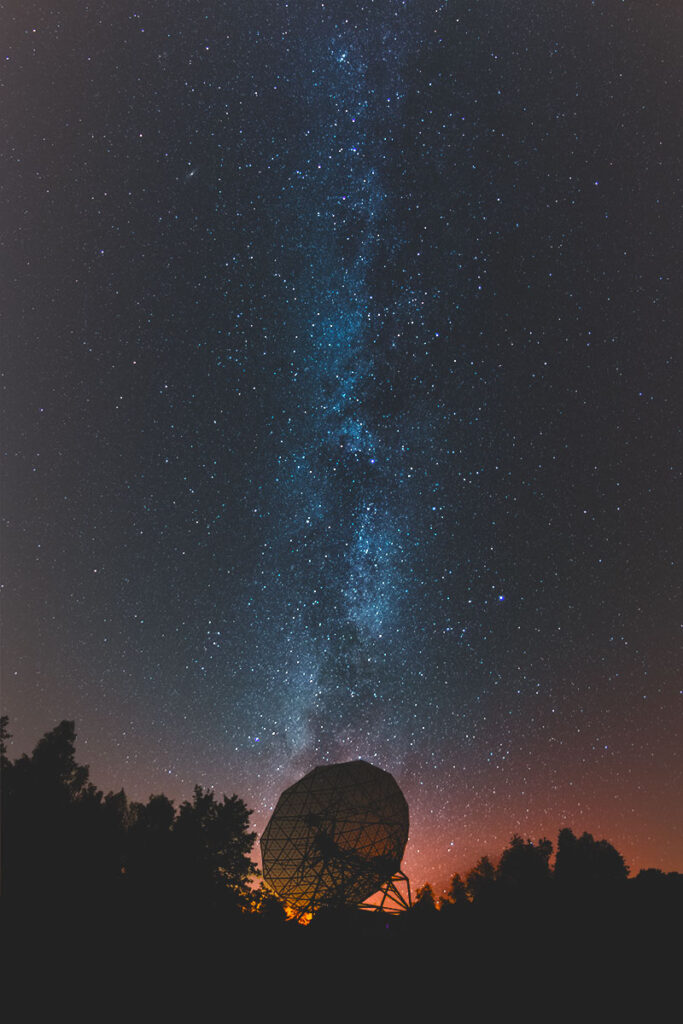Visitors of Dwingelderveld all stop by and admire the Dwingeloo Radio Telescope, whether they are walking, cycling, or horse riding in the neighborhood. But they never see this historical instrument this way. The telescope was inaugurated in 1956 and contributed greatly to the understanding of our Galaxy (among other things) in the following decades. It is therefore the most appropriate to capture the beauty of this (by now) industrial monument together with the Milky Way. Not that it is an easy task, because even in this remote location in the Netherlands, the lights from nearby towns (Hoogeveen and Meppel) disturb the skies low on the horizon.
We have tried a few moonless nights, waiting for the best visibility. One issue with taking pictures during the nights in the Heide is the humidity. We are at a low elevation, and as the night falls, fog develops easily. ‘Witte wieven’ as the Dutch call it (local dialect), meaning white witches. Frankly speaking, the place sometimes has a spooky atmosphere, with all the weird noises from the creatures of the night. But you just concentrate on the images, keep shooting – just forget the branches cracking a few meters from you, never mind to howling squealing bird (owl?) either! So, back to the story…
The telescope mapped the distribution of the hydrogen gas in the whole Milky Way (visible from here), even in places where cosmic dust obscures the view from our eyes and optical telescopes. Radio waves just travel rather freely through galaxies (in the places where there is no hot plasma), and this way we can look deep within and even behind all the stars and dust lanes. This is how the Dwingeloo Radio Telescope discovered a large barred spiral galaxy very close to us (Dwingeloo 1), on the other side of the Milky Way in 1994. What an instrument! By now, enthusiastic radio amateurs (the CAMRAS group) use it for various technical, educational, and art projects.
In Dwingelderveld there are even direction signs for the best spot to see ‘Witte Wieven‘.
Technical data
19 September 2020, Dwingeloo
Canon EOS 600D,
Samyang 8mm f/3.5 UMC, Fish-eye CS II
Omegon Minitrack LX3, tripod
ISO800, 17x3min exposures between 23:05-23:56 CEST
The image of the telescope with no tracking was taken the
day before. The MW part of those pictures had an unexpected
blob, probably due to some dirt dropping on the sensor
while pointing upwards almost to the zenith.
